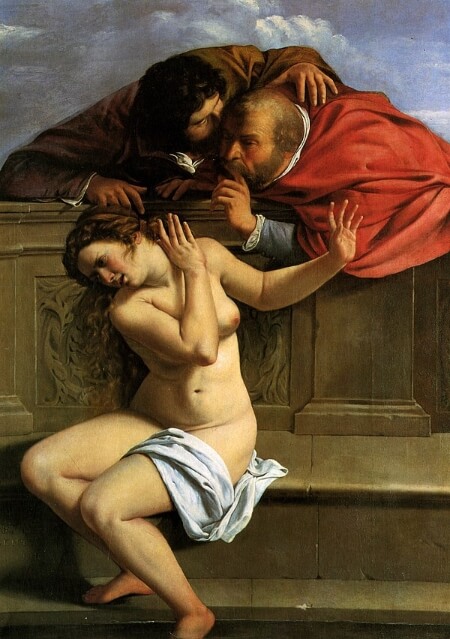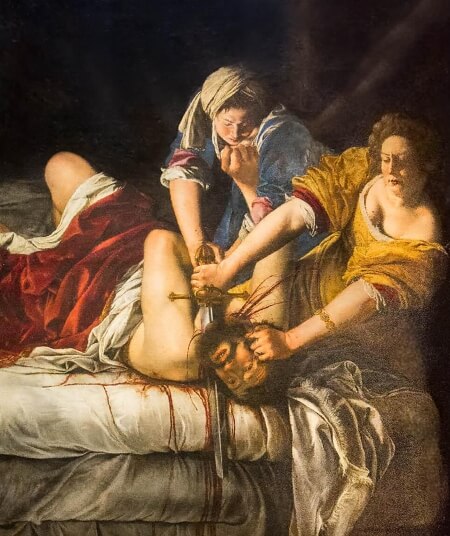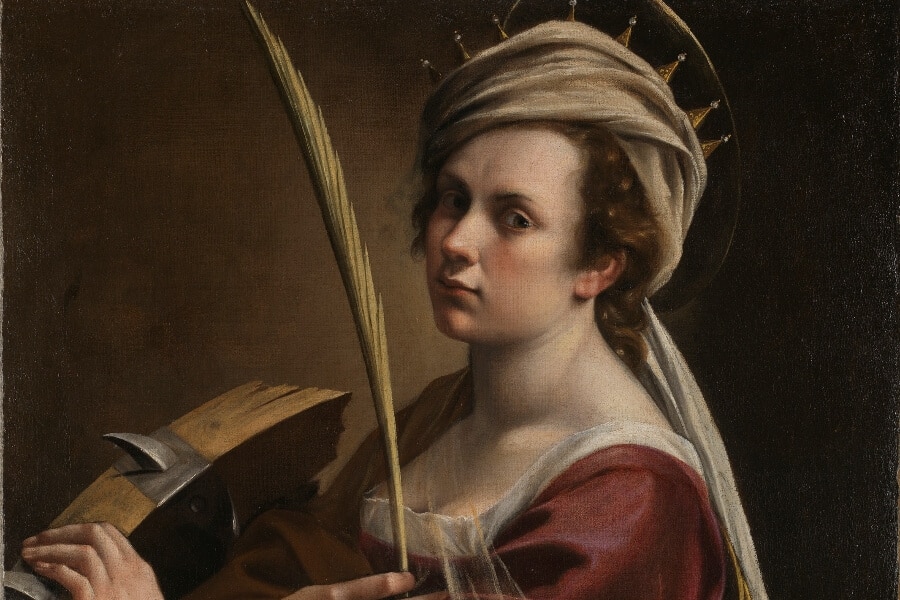Modern feminists artists are known for incorporating their personal struggles in their art. But who knew that among the few female Renaissance artists was a woman whose work was as scathing and significant as the Guerrilla Girls?
Artemisia Gentileschi, an Italian painter who worked during the first half of the 1600s, explored issues of rape, inequality, and brutality with an unabashed #MeToo ferocity. Though she was a student of the much-lauded Caravaggio and immediacy and emotion jump from her canvases, she has been largely forgotten by the world (huh, imagine that). Now however, she’s the subject of a major exhibit at the National Gallery in London, where 29 of her works on display.
“She brings her sort of lived experiences, but also her sort of feminine sensibility to her subjects,” Letizia Treves, curator of the London exhibit told the PBS News Hour. Treves calls the artist incredibly feisty and determined. “And, actually, you get that sort of personality come through her pictures as well, I think. And she is determined to be considered on a par with…male artists.”
Read More: Forgotten Female Artists Get Rediscovered
Speaking Out

“I will show your illustrious lordship what a woman can do.”
Artemisia is famous for that line, which was obviously spoken to a high-ranking man, a dull-witted one with a dim view of female capabilities, we can assume. “We hope the National Gallery is selling that line on Artemisia T-shirts.)
In Susanna and the Elders, she painted a bliblical scene of rape, not from the leering perspective of two pervy older men, but in a way that makes you feel the desperation and outrage of the young woman.
It’s not surprising that she could convey these complex emotions; at the age of 18, Artemisia herself was raped—by a friend of her artist father. The case went to trial, producing a fascinating record of life in Renaissance Rome and one woman’s courageous strength.
“I scratched his face,” she told the court, “and pulled his hair and, before he penetrated me again, I grasped his penis so tight that I even removed a piece of flesh.”
Sadly, the court case is a reminder, too, of how little has changed in 400 years. Artemisia was tortured during her testimony (supposedly to determine if she was speaking the truth), but her rapist walked free because he was a powerful man connected to the Pope. Ok, at least women who have been raped aren’t physically tortured by the courts any longer, but alas, the part about a well-placed man being protected is something that still rings true.
Two of her most famous works seem to be particularly brilliant revenge fantasies. She painted two versions of the biblical story of Judith Beheading Holofernes. What makes it especially powerful is that it mimics in a way Susanna and the Elders and it includes elements of a traditional rape scene, but flipped. Two women are aggressively holding down a man on a bed, while one of them is sliding a knife across his neck.
Satisfyingly enough, this image was often referred to—in either words or a play on the image—during the Brett Kavanaugh Supreme Court Hearings.
More Than Revenge

As forceful as her reaction to her rape is on the canvas, Treves warns us not to focus on it too closely.
“…If you just read her pictures through the sort of lens of her rape, I feel you’re actually doing her a disservice,” she told the PBS News Hour. “You’re diminishing, in a way, her artistic achievement.”
Indeed, art critics say her talent is extraordinary by any measure.
“Gentileschi achieved something so unlikely, so close to impossible, that she deserves to be one of the most famous artists in the world,” wrote Jonathon Jones, art critic for The Guardian. “It is not simply that she became a highly successful artist in an age when guilds and academies closed their doors to women. She also did what none of the other—rare—Renaissance and baroque women who made it as artists could manage: she communicated a powerful personal vision.”
Indeed, it seems like she was doing Cindy Sherman while America was just a glimmer in a pilgrim’s eye. Her self-portraits as a lute player and Saint Catherine of Alexandria (top image) reveal a knowingness that is downright modern. In addition, her portrayals of women, including meek maidservants, gave them the kind of dignity and agency not often seen in paintings by male artists.
Now that Artemisia is getting the respect she deserves, there’s another larger issue that needs to be addressed. Artemisia is just the eighth female artist in the National Gallery’s world famous collection, which includes more than 700 men. Unfortunately, this kind of ratio is quite common across museum collections, and it’s important that more artists like Artemisia—plus musicians, writers, inventors, scientists, philosophers—get their due as well.






















0 Comments